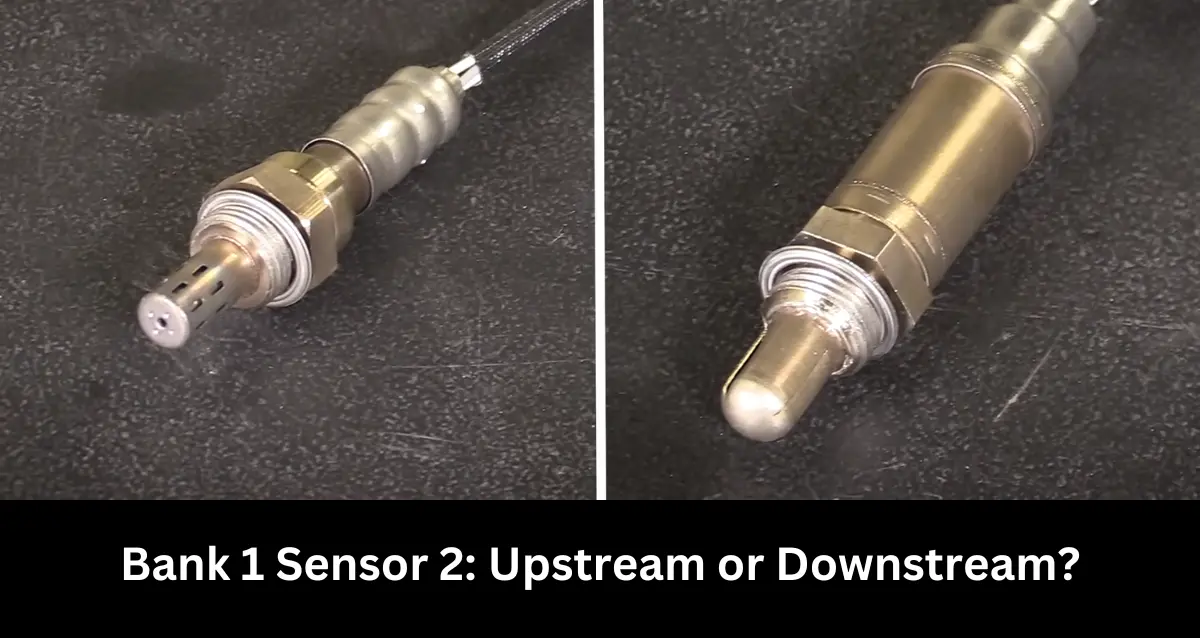Is Bank 2 Sensor 2 Upstream Or Downstream

Understanding the intricacies of automotive emission control systems is crucial for any automotive professional. A frequent point of confusion revolves around the location and function of oxygen sensors, specifically regarding the designation of "Bank 2 Sensor 2." To definitively answer the question of whether Bank 2 Sensor 2 is upstream or downstream, we need to delve into the fundamental principles of engine configuration and exhaust gas treatment.
Understanding Engine Banks and Sensor Numbering
Modern vehicles, particularly those with V-configured or horizontally opposed engines, often employ a dual exhaust system. Each set of cylinders is referred to as a 'bank.' Bank 1 is conventionally defined as the bank containing cylinder number 1. Bank 2 is then the opposing bank. Inline engines, of course, only have a single bank. The sensors are numbered sequentially, starting with the sensor closest to the engine. Therefore, Sensor 1 is always the upstream sensor, meaning it's positioned before the catalytic converter. Sensor 2, on the other hand, is downstream, located after the catalytic converter. Thus, Bank 2 Sensor 2 is definitively a downstream oxygen sensor.
Functionality of Upstream vs. Downstream Sensors
The primary role of the upstream oxygen sensor (Sensor 1) is to measure the oxygen content of the exhaust gas before it enters the catalytic converter. This data is critical for the engine control unit (ECU) to regulate the air-fuel mixture. By monitoring the oxygen level, the ECU can adjust the amount of fuel injected into the cylinders, ensuring optimal combustion efficiency and minimizing harmful emissions. These sensors are typically wideband sensors or air-fuel ratio sensors capable of providing highly accurate and rapid readings.
The downstream oxygen sensor (Sensor 2) serves a different, but equally important, purpose. It monitors the oxygen content of the exhaust gas after it has passed through the catalytic converter. The catalytic converter's job is to reduce harmful pollutants like hydrocarbons (HC), carbon monoxide (CO), and nitrogen oxides (NOx) into less harmful substances. The downstream sensor verifies the efficiency of the catalytic converter. If the converter is functioning correctly, the downstream sensor readings should be significantly different from the upstream sensor readings. A failing catalytic converter will result in the downstream sensor mimicking the upstream sensor, triggering a diagnostic trouble code (DTC) such as P0420 (Catalyst System Efficiency Below Threshold Bank 1).
Technical Specifications and Engineering Choices
Oxygen sensors typically operate based on a zirconia or titania ceramic element. Zirconia sensors generate a voltage proportional to the difference in oxygen concentration between the exhaust gas and the surrounding atmosphere. Titania sensors, on the other hand, change their resistance based on the oxygen concentration. Wideband sensors employ a more complex design, utilizing a pumping cell to actively control the oxygen concentration within a diffusion gap, allowing for more precise air-fuel ratio measurements.
Downstream sensors, because they are not directly involved in air-fuel mixture control, can often be narrowband zirconia sensors. The choice of sensor type depends on the vehicle manufacturer's specific engineering requirements and emission control strategy. Factors such as cost, accuracy, and response time are all considerations in the selection process.
Real-World Performance and Troubleshooting
A malfunctioning downstream oxygen sensor can manifest in various ways. While it doesn't directly affect engine performance as drastically as a faulty upstream sensor, it can trigger the check engine light and potentially lead to failure to pass emissions testing. Common symptoms include:
- Illuminated check engine light
- Diagnostic trouble codes related to catalyst efficiency (e.g., P0420, P0430)
- Slightly reduced fuel economy (in some cases)
Troubleshooting a downstream oxygen sensor typically involves using a scan tool to monitor the sensor's voltage output. A healthy downstream sensor should exhibit a relatively stable voltage, indicating consistent catalyst performance. A fluctuating voltage, especially one that mirrors the upstream sensor, suggests a problem with the catalytic converter or the sensor itself. Before replacing a downstream sensor, it's essential to rule out other potential causes, such as exhaust leaks or wiring issues.
Reliability and Maintenance
Oxygen sensors are exposed to harsh conditions, including extreme temperatures, exhaust gases, and contaminants. This can lead to sensor degradation and eventual failure. Factors that can shorten sensor lifespan include:
- Oil contamination
- Coolant leaks
- Excessive carbon buildup
- Use of leaded fuel (in older vehicles)
Regular vehicle maintenance, including timely oil changes and addressing any leaks promptly, can help prolong the life of oxygen sensors. While there is no specific maintenance required for oxygen sensors beyond visual inspection, it's a good practice to check their condition periodically, especially if the vehicle is experiencing any performance or emissions-related issues.
Future Trends
As automotive technology evolves, emission control systems are becoming increasingly sophisticated. Future trends in oxygen sensing include:
- More advanced sensor materials and designs for improved accuracy and durability
- Integration of sensors with onboard diagnostics for enhanced monitoring and fault detection
- Use of sensors in advanced combustion control strategies, such as homogeneous charge compression ignition (HCCI)
- Development of sensors capable of measuring multiple exhaust gas components simultaneously
Conclusion
In conclusion, Bank 2 Sensor 2 is unequivocally a downstream oxygen sensor. Understanding the role of each sensor in the emission control system is vital for accurate diagnosis and repair. As the automotive industry moves towards stricter emission standards and more complex engine management systems, a thorough understanding of oxygen sensor technology will become even more critical for automotive professionals. The future will likely see further advancements in sensor technology, leading to more efficient and cleaner vehicles.
